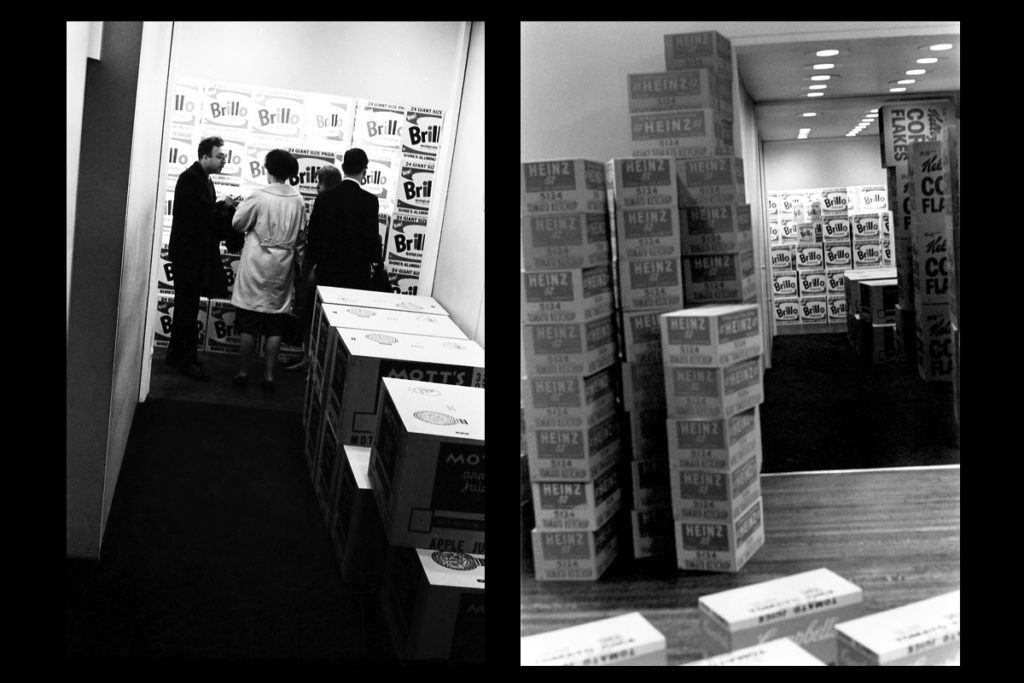Opinion
The First Book on Warhol’s Sculptures Shows Him at His Best
THE DAILY PIC: In Thomas Morgan Evans' new study, Warhol the sculptor comes off as a disruptor.

THE DAILY PIC: In Thomas Morgan Evans' new study, Warhol the sculptor comes off as a disruptor.

Blake Gopnik

THE DAILY PIC (#1799): We don’t tend to think of Warhol as a sculptor, but his second Pop Art solo in New York – his famous “Boxes” exhibition at the Stable Gallery in 1964, shown here in two photos by Billy Name – was all and only full of three-dimensional works. As the young scholar Thomas Morgan Evans points out in his new volume called 3D Warhol, the very first book on the subject, Warhol actually made sculptural works throughout his career. It’s not his fault, or theirs, that most of them barely get noticed today.
If nothing else, Evans’s book acts as an excellent trot to the pieces in question, from the “crumpled” drawings Warhol showed in 1954 (but not, as Evans claims, in his first solo) by way of his Brillo Boxes (of course) through to his floating Silver Clouds, his Rain Machine and his several Invisible sculptures. (One of those was an empty zone in Warhol’s studio “protected” by motion detectors that set off alarms; another was just Warhol himself standing in an empty vitrine, beside a sculpture-less pedestal.)
But the new book is much more than an inventory. Evans underlines how consistently radical and daring Warhol’s art really was, even though it has often been billed as cheery, market-friendly Pop. Warhol’s sculptures are the artist at his most daring, argues Evans. They provide, as he writes, “a critical, oppositional recoding of the institutions of art” – especially the institutions that decide which objects have value and which don’t, and who should get to look at what. “All of the major exhibitions in this book were also major events, and these invasions of the sedate space of the artworld all defined moments of social mixing and social force that Warhol had carefully orchestrated.”
The book suffers from some turgid, scholastic prose: “Commodity fetishism powerfully unifies sign and object in a new immaterial hyperreality,” or “Warhol’s couplings present negations that hover in stasis. This is sculpture recast … as ‘out-cast’ of these systems of reproduction, coming into being only on exit from relays of images.” But it’s possible to bleep over such passages (or to imagine rewriting them) and get at the powerful matter – or anti-matter, almost – of Warhol’s sculpture. (Photos courtesy I.B. Taurus, ©The estate of Billy Name/Dagon James)
For a full survey of past Daily Pics visit blakegopnik.com/archive.